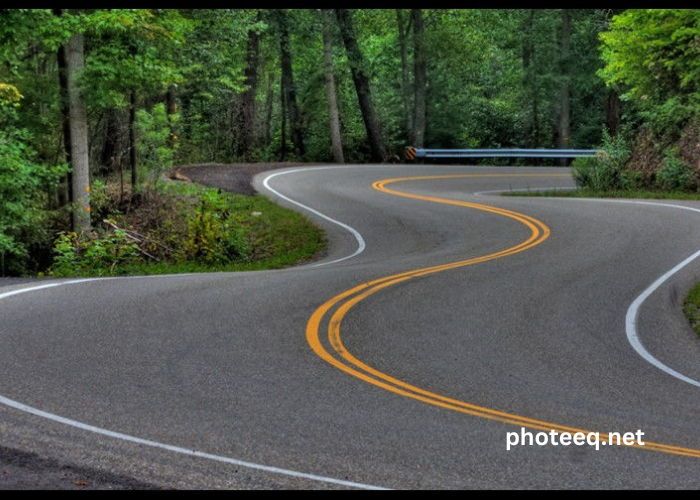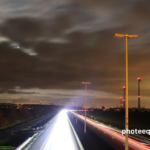The Tail of the Dragon, known for its curvy and challenging roads, has become a mecca for photographers from all over the world. Located in the scenic Smoky Mountains of Tennessee and North Carolina, this 11-mile stretch of Highway 129 offers breathtaking views and a thrilling driving experience. With its 318 curves, it’s no wonder why the Tail of the Dragon has become a photographer’s dream. In this article, we will explore why this iconic road is so popular among photographers, as well as provide you with tips and techniques to capture stunning photos on the Tail of the Dragon.
Why the Tail of the Dragon is a Photographer’s Dream
The Tail of the Dragon offers a unique and captivating backdrop for photographers. The winding roads, surrounded by lush forest and stunning mountain vistas, provide endless opportunities for creative compositions. Whether you’re an automotive photographer looking to capture the perfect shot of a sports car maneuvering through the curves or a landscape photographer seeking to capture the beauty of the Smoky Mountains, the Tail of the Dragon has it all.
One of the main reasons why the Tail of the Dragon is a photographer’s dream is the ever-changing lighting conditions. The twisting roads create pockets of light and shadow, making for dramatic and dynamic photographs. The interplay between light and shadow adds depth and dimension to your images, creating a sense of drama and intrigue. Additionally, the surrounding mountains and foliage provide a beautiful natural frame for your photographs, enhancing their overall aesthetic appeal.
Tips for Capturing Stunning Photos on the Tail of the Dragon
- Scout the location: Before heading out to photograph the Tail of the Dragon, it’s essential to scout the location. Familiarize yourself with the road and its various curves, as well as the best vantage points for capturing unique perspectives. Take note of any interesting features or landmarks that could add interest to your photos.
- Use a wide-angle lens: To capture the grandeur and scale of the Tail of the Dragon, a wide-angle lens is a must-have. This lens allows you to include more of the road and its surroundings in your frame, creating a sense of depth and immersion. Experiment with different focal lengths to find the perfect balance between capturing the entire scene and highlighting specific details.
- Experiment with different angles: Don’t be afraid to get creative with your compositions. Try shooting from low angles to emphasize the curves of the road or climb to higher ground for a bird’s-eye view of the landscape. Play with different perspectives and angles to add visual interest and variety to your photographs.
Best Times of Day for Photography on the Tail of the Dragon
The Tail of the Dragon offers unique lighting conditions throughout the day, each with its own advantages and challenges. Here are the best times of day for photography on the Tail of the Dragon:
- Golden Hour: The hour after sunrise and the hour before sunset, known as the golden hour, is widely regarded as the best time for photography. During this time, the soft golden light casts a warm glow on the landscape, creating a magical and ethereal atmosphere. The long shadows and warm tones add depth and texture to your photos, making them more visually appealing.
- Blue Hour: The blue hour, which occurs before sunrise and after sunset, is another excellent time for photography on the Tail of the Dragon. The soft, diffused light during this time creates a serene and peaceful ambiance. The blue hues of the sky add a touch of tranquility to your photos, making them more captivating and soothing.
- Nighttime: Nighttime photography on the Tail of the Dragon can be a rewarding and challenging experience. The winding roads and surrounding landscape illuminated by headlights and streetlights create a surreal and dramatic atmosphere. Experiment with long exposures to capture the motion of the cars and create light trails. Don’t forget to bring a tripod to ensure sharp and steady shots.
Must-Have Camera Gear for Photographing the Tail of the Dragon
To capture stunning photos on the Tail of the Dragon, it’s essential to have the right camera gear. Here are some must-have items to consider:
- DSLR or Mirrorless Camera: A high-quality camera with manual controls will allow you to have full control over your settings and capture sharp and detailed images.
- Wide-angle lens: As mentioned earlier, a wide-angle lens is essential for capturing the expansive landscapes and curves of the Tail of the Dragon. Look for a lens with a focal length between 14mm to 24mm for optimal results.
- Tripod: A sturdy tripod is crucial, especially for low-light and long-exposure photography. It will help you keep your camera steady and ensure sharp images.
- Neutral Density filters: Neutral density filters are useful for controlling the amount of light entering the camera, allowing you to use longer shutter speeds during the daytime and create motion blur effects.
- Remote shutter release: A remote shutter release will help eliminate camera shake when using longer exposures and ensure sharp images.
Composition Techniques for Creating Striking Tail of the Dragon Photos
Composition plays a vital role in creating striking and visually appealing photographs. Here are some composition techniques to consider when photographing the Tail of the Dragon:
- Leading lines: The curves of the Tail of the Dragon naturally create leading lines that guide the viewer’s eye through the frame. Use these lines to create a sense of movement and draw attention to specific points of interest.
- Rule of thirds: The rule of thirds is a classic composition technique that can help create balance and visual interest in your photos. Imagine your frame divided into a grid of nine equal parts, and place key elements of your composition along these lines or at their intersections.
- Foreground interest: Including a strong foreground element in your composition can add depth and create a sense of scale. Look for interesting rocks, foliage, or other elements that can serve as a foreground anchor for your image.
- Framing: The Tail of the Dragon is surrounded by beautiful natural scenery, making it an ideal location for using framing techniques. Look for natural frames such as overhanging branches or rock formations to frame your subject and add depth to your photos.
Editing Tips for Enhancing Your Tail of the Dragon Photos
Once you’ve captured your photos on the Tail of the Dragon, it’s time to bring them to life through post-processing. Here are some editing tips to enhance your Tail of the Dragon photos:
- Adjust exposure and contrast: Start by adjusting the exposure and contrast to bring out the details and create a balanced tonal range. Be mindful not to overdo it, as it can lead to unnatural-looking images.
- Fine-tune colors: Experiment with the color temperature and saturation to achieve the desired mood and atmosphere in your photos. Play with the HSL (Hue, Saturation, and Luminance) sliders to selectively enhance or tone down specific colors.
- Enhance details: Use sharpening tools to enhance the details in your photos, such as the texture of the road or the foliage. Be cautious not to over-sharpen, as it can introduce artifacts and make your images look unnatural.
- Crop and straighten: Sometimes, a little cropping and straightening can significantly improve the composition of your photos. Remove any distracting elements and ensure your horizon line is level.
Conclusion: Capturing the Beauty of the Tail of the Dragon through Photography
Photographing the Tail of the Dragon is a thrilling and rewarding experience for both amateur and professional photographers. With its winding roads, stunning landscapes, and ever-changing lighting conditions, it offers endless opportunities for creative compositions. By following the tips and techniques shared in this article, you’ll be well-equipped to capture stunning photos on the Tail of the Dragon. So grab your camera, hit the road, and unleash your creativity as you capture the beauty of this iconic destination through photography.







